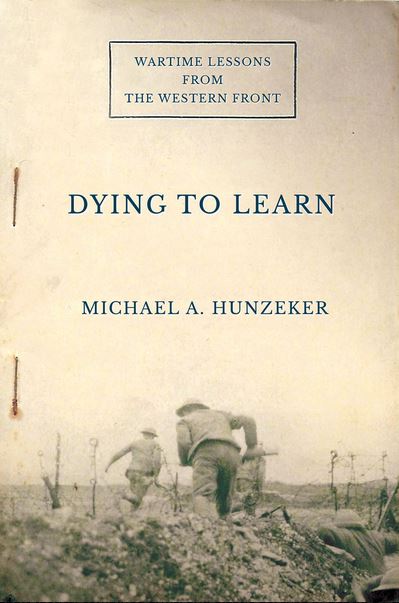Wartime Lessons from the Western Front
Michael A. Hunzeker, (Cornell, 2021). pp. 224.

amazon.com
In Dying to Learn, Michael A. Hunzeker expounds on a novel theory he developed to explain how militaries learn during wartime. Hunzeker utilises three variables — Assessment, Command, and Training (ACT) — to form a somewhat simple theory to explain how a military force can affect necessary change. Using his ACT theory, Hunzeker demonstrates through the example of the Western Front of the First World War how the French, German, and British armies learned or failed to do so to the nature of combat in 1914-18.
The choice of the Western Front, it has to be said, was inspired. As Hunzeker notes, no two wars are the same, and no two armies are either. However, he identifies the Western Front as the closest thing we have to a ‘natural laboratory’ in warfare. Here, we had three armies, all modelled along broadly similar lines, with similar modus operandi, facing the same battlefield conditions and challenges, making it possible to make almost parallel assessments of what worked and did not work in each army.
Dying to Learn is a theoretically-motivated work. Its goal is to understand wartime learning and to espouse a theory that can be adapted to various military applications and that such learnings be put to use by military leaders — as exemplified by Hunzeker’s use of ‘shadow cases’ of the US wars in Iraq and Vietnam. However, as alluded to above, his ACT Theory is somewhat simple and straightforward; however, this is not necessarily problematic, as simplicity likely makes assimilation easy for the practitioner and comprehension simple for the non-specialist reader. As a theory-bound work, one would be forgiven for dismissing Dying to Learn as niche and not suited to the general reader or the non-military audience. However, such views are erroneous. Hunzeker does an excellent job of weaving his theory through history in a manner that does not seem ham-fisted nor easily dismissed.
As a theory-bound work, one would be forgiven for dismissing Dying to Learn as niche and not suited to the general reader or the non-military audience. However, such views are erroneous.
Furthermore, despite its brevity — at 224 pages — Dying to Learn provides a magisterial overview of the internal socio-political dynamics at play in each of the armies under study. As well as the military conditions faced by each belligerent. In doing so, Hunzeker makes great strides in combatting the myth of ‘Lions led by Donkeys’ and intentionally or otherwise undermines the historical argument that military leaders are somehow hidebound conservatives unwilling to change.
From a personal perspective, as someone who has long been tired of the ‘primacy of grief’ that pervades the historiography of the First World War, this book has been an excellent read, and I would without hesitation recommend it to both general readers and serious students of military operations.
Dermot Nolan has spent 12 years in the Army Reserve in Ireland, where he served in the Artillery Corps. He holds a master’s degree in Military History and Strategic Studies from the National University of Ireland at Maynooth. In addition, he has a master’s degree in International Relations and International Security from the Rijksuniversiteit Groningen in the Netherlands. His fundamental interests are modern land- and air-power and nuclear deterrence. His work has been published in European Security and by Finabel-The European Army Interoperability Centre. He currently lives in France, where he is working on mastering the language.






